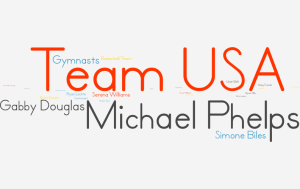Editor’s note: Mark Simon is managing director, North America, at market research firm Toluna, Wilton, Conn.
The summer Olympic games are an exciting tradition for both participants and spectators. Prior to the game we surveyed 1,000 respondents in the U.S., U.K., Italy, Spain, France, Germany, Australia, China and Japan about the 2016 Olympics Games in Rio, and again after 10 days of coverage. We asked about plans to watch the games, favorite sports and athletes, as well as awareness of sponsors and advertisers.
With all the various options available to us today to consumer media, it seems Americans are tuning in more than they intend to. While only 68 percent of respondents in the US planned to watch the Olympics, 78 percent have reported watching.
It’s easier and easier to consume media on the go digitally, and we saw a significant increase in people who are watching the Olympics in the middle of the day. Thirty-one percent planned to watch coverage midday but 41 percent are actually watching at that time.
The top sports respondents surveyed are looking forward to watching this year across the globe are swimming (59 percent), gymnastics (51 percent) and athletics or track and field (42 percent). Americans are most looking forward to gymnastics (70 percent).
The survey asked respondents to mention the athletes they were most excited to watch compete. Not surprisingly, in the U.S., the fan favorite athletes are Michael Phelps (18 percent), Gabby Douglas (7 percent) and Simone Biles (5 percent). Overall, 28 percent in the U.S. don’t have a specific athlete they’re rooting for – it’s all about Team USA!
Each region is hoping to the next host city will be close to home! The 2024 Olympics are still being decided but respondents in the U.S. are voting for Los Angeles (58 percent), respondents in France are voting for Paris (66 percent) and respondents from U.K., Italy, Spain and Germany are voting for Rome (43 percent).
Sponsors and advertisers
With all that brands spend on sponsorships and advertising in the Olympics, it’s important to gauge how much exposure companies are truly getting. NBC has sold $1.2 billion in advertising, and there has been controversy surrounding the loosened restrictions of advertisements from non-sponsor brands. Prior to the games, more than half of respondents were able to identify brands like Coca Cola (68 percent) and McDonalds (55 percent) as official sponsors. Forty-two percent identify Nike as an official sponsor, as they are the official uniform partner for this year’s games. Forty-one percent of respondents globally identify Adidas as being a sponsor of the Olympic games, even though they are not sponsoring in 2016. Adidas was the official sportswear sponsor of the 2012 games in London. They are seeing the benefits of that sponsorship four years later.
After watching 10 days of Olympic coverage, unaided awareness of Nike as an official sponsor brand rose from 8.8 percent to 9.9 percent, while the other top brands remained fairly flat. Nike’s position as the official uniform partner lands them in the mix with the other top Olympic partners who pay $100 million for their four-year deals, even though Nike paid much less for their position as a supplier.
The top-rated unofficial Olympic sponsor ad was the Under Armour Rule Yourself commercial, featuring Michael Phelps. This ad ranked ninth on our list in mentions.
Overall, advertisers don’t appear to be making a big splash with their ad-spend thus far during the games. Most have remained flat or even decreased in awareness after 10 days of coverage. Some other advertisers have capitalized on their ad placements to increase awareness and cut through the clutter. Of all of this year’s unofficial sponsors, it appears Under Armour is ahead in taking advantage of the looser guidelines of Rule 40 this year to increase awareness through smart advertising – while their awareness remained flat, they were the one of the Top 10 mentioned ads on our list. Other brands are coming out on top and being identified as official sponsors even though they haven’t paid the big price tag for that title such as Gatorade (31 percent), Adidas (31 percent) and Toyota (27 percent).

